Are Turning Points part of the past, or do they mark the future? And are Turning Points always coming with a big bang or fireworks, like the new year, or can they happen in silence and without being even noticed at first?
The last weeks of the year always bear some kind of an irritation for me. It’s this time of prescribed transition, sliding from one year into the other. It’s an emotional no-man’s-land, as I can feel the present slowly turning into the past while the so called future has not officially arrived. Birthdays are the same: I always start getting confused about my current age some weeks before my next birthday as it feels like I am no longer really the old age but slowly growing into the new one. It’s like being on an elevator or the stairway, on a ship or a train: places that cannot be located because they are in between things.
Like Turning Points. Are Turning Points part of the past, or do they mark the future? And are Turning Points always coming with a big bang or fireworks, like New Year, or can they happen in silence and without being even noticed at first?
“Turning Point” was the theme of the ASSITEJ Artistic Gathering we just experienced together in Belgrade and Novi Sad. And although only two weeks later, this already feels in the past, and Cuba and the World Congress are coming more and more into view. Many thoughts and moments we shared in Serbia still resonate with me and make me feel pretty sure they will stick around till the Congress.
I’m gonna share one of them here:
In the Artistic Encounters we exchanged responses on the meaning of Turning Points when it comes to our (performing) art. Each group was asked to create an image/drawing together that included and combined the different perspectives. The results reflected the richness of focus points, hopes, ideas and fields of action that artists working for and with children and young people are considering in their practice.
One paper said: “Acknowledge that young people today are immersed in the digital world” to let the Turning Point “end technophobia,” whereas another paper went for a completely different subject and discussed “Parenthood in Arts” to envision a turn from a “bad conscience at work and at home” to a “work-life balance” that is fitting artist parents and becomes the work-life balance for every artist. Interesting was also the re-interpretation of barriers related to Turning Points with a Vision of “Domino Day” and the idea that each barrier is transformed into a domino: when you “tip the first one all the others will fall.”
And the last one takes me back to the tricky concept of time – present, past and future – and our relation to it: “Children are NOT the future. Children are now”. And the same goes for elderly people: “Older people are NOT the Past. Everybody is NOW”. This shows the “importance of the intergenerational scene”, and makes it very clear: “We all are here together “.
In this sense I wish all of you a hopeful and tender way into the new year and hope to see you around.
Julia Dina Heße
EC Member of ASSITEJ International






